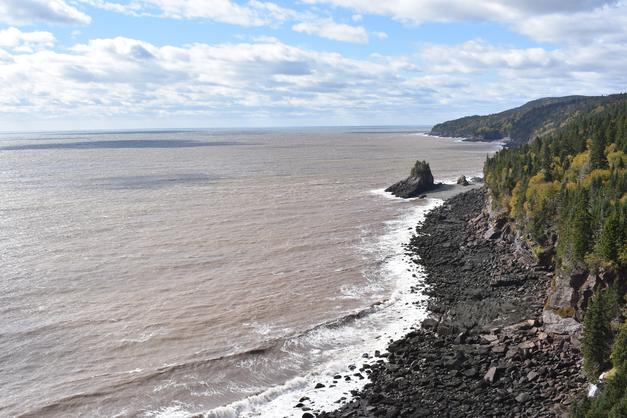HALIFAX — An engineering study says the cost of a decade-long project to save the land link between Nova Scotia and New Brunswick from climate-related flooding will range between $189 million and just over $300 million.
The study released Friday suggests either raising the height of the existing 35 kilometres of dikes for an estimated $200 million, building a new dike at a cost of $189 million, or raising the existing dikes and installing steel sheet pile walls in select locations for about $301 million.
Whichever option is chosen, the governments of Nova Scotia and New Brunswick made clear Friday they need Ottawa to commit to a major portion — if not the entirety — of the cost before the project can proceed.
"The price tag on the project is in the ballpark of my capital budget for a year. It's massive," Jill Green, New Brunswick's minister of transportation and infrastructure, told an online news conference.
Kim Masland, the Nova Scotia transport minister, added: "I'd love to see it 100 per cent funded federally," though neither she nor Green ruled out a provincial contribution.
The study anticipates that once an option is chosen, it would take five years for construction to begin, and the project wouldn't be completed until 10 years after the start date. That's assuming there aren't delays arising from environmental assessments, archeological studies and consultations with First Nations.
Experts have for decades warned that the combination of high tides with a powerful storm up the Bay of Fundy could overwhelm aging dikes and flood large portions of Amherst, N.S., as well as neighbouring Sackville, N.B.
Meanwhile, the sea level at the mouth of the Bay of Fundy has been rising at a rate of about 2.4 millimetres a year over the past century due to the warming planet, even as the dikes and coastal land continue to subside.
If a flooding disaster occurs, vital transportation that carries about $35 billion in trade annually would be disrupted, and both Nova Scotia and Newfoundland and Labrador's supply of food, medicine and other essentials could be severely reduced.
The study notes that current dikes, some of them with earth foundations dating back to the Acadian settlements of the 1600s, have been gradually built up to provide protection of 8.5 metres, with the most recent major improvements in the 1950s. The refurbished dikes would add two metres, protecting the land against rising tides to a level of 10.6 metres.

Both cabinet ministers said they realize there's no guarantee a storm on the scale of the famous Saxby Gale of 1869 won't sweep back up the Bay of Fundy and submerge Amherst and Sackville again before the work is completed. However, they said the project has to be built with an eye to withstanding rising seas to at least 2100, and it is a project that will have to be made to last.
"Construction takes a long time," Green said. "This is a massive project that's not going to happen overnight."
Consultants Wood Canada Ltd. were chosen to carry out the study in January 2020, but there have been repeated delays in the date of its delivery, and it was only provided to the provinces and the federal government in January 2022. Green said the delays were related to a federal election occurring in the middle of the $700,000 study.
The analysis considered 10 options, with three making the short list.
In the first two, less expensive options, the engineers envision either adding to existing dikes, or replacing them with a new dike in some portions. Both of the options also include a water control structure across the Tantramar River that runs near Sackville.
The third and more costly $300-million option envisions raising existing dikes to 10.6 metres, a water control structure across the Tantramar River and a steel wall through the Tantramar Marsh to the Aulac River — a distance of about 800 metres.
Green said the more expensive option is on the table as it's possible the cheaper two scenarios may encounter obstacles.
"As we move into Phase 2 of this, the archeological and environmental assessments may dictate how we move forward and what options we have on the table ... It's to be determined," she said.
David Kogon, the mayor of Amherst, said in an email that he's relieved the dikes will be raised, as he had feared the inhabited lowlands would be abandoned and that a bridge would be created solely to protect the transportation and communications corridor.
"All of the top three options presented are aimed at protecting not only the transportation corridor but the neighbouring communities, Amherst and Sackville, and the farmland contained within the marsh," he said.
This report by The Canadian Press was first published March 18, 2022.
Michael Tutton, The Canadian Press









